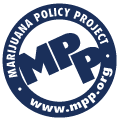|
We Update Daily!
 Custom Search Custom Search
Chris S. Kenoyer. Owner
MMJ Patient, Medical Activist, Online Patients Advocate,
Online MMJ News Journalist
My Personal Medical Bio
Follow Us Now On Twitter
@MedicalMMJMan
Or Follow Us Now
On Facebook
Email Us Here
olpwebs@yahoo.com
Or Email Us Securely Here
MedicalMMJMan@countermail.com
NEW 100% Encrypted Email Server
OLP’s Free MMJ News EList
Get The Latest In MMJ News
All Press Contact Info For Us!
Is CBD? A Possible Cure For
Breast Cancer..? And All The Other
Many Forms & Types Of Cancer..?
Learn More About " CBD" Here
***************************
Advertise Here On OnlinePot
Rates As Low As $50 a Year
24/7 – 365 Days A Year Of Sales!
***********************************
Website Navigational Links
Main Start Page 2
**************************
Latest Marijuana News Reports
*********************************
Parody’s Cartoons US
Government Grown Pot,
Term Papers, School
Reports, & Thesis’s On
Marijuana & Cannabis
*********************************
Amsterdam A to Z
********************************
Canadian Marijuana Websites
*******************************
Church’s & Pot Cannabis
*****************************
Co-Ops, Clinics, Dispensary’s
*****************************
Marijuana Doctors & Clinics
****************************
Pot Cooking Recipes
****************************
Drug Testing A To Z
***************************
Pot Games
****************************
Pot Songs Video’s
****************************
100’s Of Grow Guides
***************************
Hash A- Z
***************************
Cannabis Legal Info, Drug
Lawyers, State, Federal Laws,
State & Supreme Court Rulings
**********************
POW’s Of The MMJ War!
*****************************
Other Marijuana Websites
Websites Link Exchange!
****************************
Medical Marijuana Studies,
Research Report’s, Medical
Cannabis Clinic Study’s
****************************
Parody’s & Cartoons
When We All Need A Good Laugh!
****************************
Avoiding Online MOM Scammers
Newly Re-Updated Info!
*****************************
The Politics Of Contraband
Medical Marijuana In The Mail?
******************************
The Hall Of Shame Section
The Online MOM Scammers
*****************************
Online MOM Providers Ads
****************************
Politicians & Voters Rights
****************************
Medical Marijuana, Strains
****************************
The OG Marijuana Strain Guide
****************************
800+ FAQ Growing Questions
****************************
Patients Spiritual Guidance,
Free Online Crisis Help Center
****************************
Online Marijuana Seed Banks
****************************
Maximum Security Section
Just Updated!
*****************************
Traveling Tips, Guides, B & B’s
****************************
Vaporizers A To Z
*****************************
Online Pot Video’s & Movies
**********************************************
Please Visit Our Sister Websites!
Maine Patients Coalition.org
Reefer Madness Teaching
Museum.org
Listen Right Here Online!
To Original 1930-1950’s
Reefer Madness Propaganda
Radio Shows And Programs
Before TV There Were
"Radio Stars"



*********************************
Legal Disclaimer
Guest Book
Translate Text or Web Page Go To:
Language Tools Google Translations
Article Submissions & News
Reports Are Always Gladly
Accepted Here.

1999-2013 Copyright ©
All Rights Reserved.
No part of this site maybe used or
reproduced in whole or in part
without the written consent of the
Copyright Owner
www.onlinepot.org
OnlinePot assumes no legal liability for any products, or information or
news posted, services offered, Or
any contests or give away’s offered.
|
|
ONDCP’s 2003 "Open Letter" About Marijuana
Below is the text from ONDCP’s 2003 open letter about marijuana. Following each assertion, a response is given.
Assertion: "Marijuana is not a benign drug. Use impairs learning and judgment, and may lead to the development of mental health problems."
American Medical Association
Response: Alcohol is even worse, yet adults aren’t put in jail for having a drink. There’s no proof that marijuana use actually leads to mental health problems, though there are people with mental health problems for whom drug use may be a symptom. This is no justification for prohibiting responsible adults from possessing marijuana.
Assertion: "Smoking marijuana can injure or destroy lung tissue. In fact, marijuana smoke contains 50 to 70 percent more of some cancer causing chemicals than does tobacco smoke."
American Lung Association
Response: Moderate tobacco use is defined as 15-24 grams of tobacco per day. Very few marijuana users consume more than a gram or two, so the risk from tobacco is much greater. There is still no evidence that marijuana use has ever actually led to cancer, but the point is that our society already tolerates substances which pose much greater risks. Better smoking devices can eliminate some of the problem. This is no justification for prohibiting responsible adults from possessing marijuana.
Assertion: "Teens who are high on marijuana are less able to make safe, smart decisions about sex — including saying no. Teens who have used marijuana are four times more likely to have been pregnant or gotten someone pregnant than teens who haven’t."
National Campaign to Prevent Teen Pregnancy
Response: What this really means is that young people who engage in one risk-taking behavior, such as alcohol or other drug use, may also engage in other risk-taking behavior, such as unprotected sex. For example, alcohol abuse and teen pregnancy are widely perceived to go hand in hand. There’s no evidence that marijuana is as much of a danger. This is no justification for prohibiting responsible adults from possessing marijuana.
Assertion: "Marijuana can impair perception and reaction time, putting young drivers, their passengers and others on the road in danger. Teens, the highest risk driving population, should avoid anything that might impair their ability to operate a vehicle safely."
American Automobile Association
Response: On an individual basis, alcohol is much more powerful in terms of impairing perception, reaction time, and overall driving abilities, yet we don’t throw adults in jail for having a drink. On the other hand, there is no evidence that adult drivers on marijuana pose or are at any special risks, and in fact some research indicates that adult marijuana using drivers are aware of their possible impairment and respond by driving a bit slower. This is no justification for prohibiting responsible adults from possessing marijuana.
Assertion: "Marijuana use may trigger panic attacks, paranoia, and even psychoses, especially if you are suffering from anxiety, depression or having thinking problems."
American Psychiatric Association
Response: Caffeine can trigger the same responses in such individuals. This is no justification for prohibiting responsible adults from possessing marijuana.
Assertion: "Marijuana can impair concentration and the ability to retain information during a teen’s peak learning years."
National Education Association
Response: The same is true for alcohol. Marijuana doesn’t have that effect on everyone, but if the NEA’s point is that kids should not do their homework while stoned or drunk, I’m not going to argue with them. This is still no justification for prohibiting responsible adults from possessing marijuana.
Assertion: "Recent research has indicated that for some people there is a correlation between frequent marijuana use and aggressive or violent behavior. This should be a concern to parents, community leaders, and to all Americans."
The National Crime Prevention Council
Response: Research shows that marijuana use is more likely to lead to passive, nonviolent, meditative behavior than anything else. However, that’s not what this assertion is about. What they’re saying — what the research, such as the CDC’s Youth Risk Behavior Survey, really shows — is that people who engage in risk-taking such as tobacco, alcohol or other drug use are also more likely to engage in other risk-taking such as aggressive or violent behavior. There’s no proof of causation and to the NCPC’s credit, there’s none claimed, though the implication is clear enough to mislead. This is no justification for prohibiting responsible adults from possessing marijuana.
Assertion: "And, according to the National Institute on Drug Abuse, marijuana can be addictive. In fact, more teens are in treatment with a primary diagnosis of marijuana dependence than for all other illicit drugs combined."
Response: Most of those kids are sent to treatment by a judge in a plea agreement, or by their own lawyers before going to court, to avoid criminal punishment — a huge waste of resources when one considers that these kids probably don’t have a drug problem, yet they take up one of the limited treatment slots available.
ONDCP Anti-Drug Media Campaign Ineffective And Misleading, Yet Feds Continue Spending Millions On It
The National Institute on Drug Abuse has released what may be its final evaluation of ONDCP’s Anti-Drug Media Campaign. The evaluations have been conducted by Westat and the Annenberg School of Communications under a grant from NIDA. According to Advertising Age on Jan. 19, 2004 ( "Study Faults White House Anti-Drug Ads"), "A study commissioned by the National Institute on Drug Abuse ( NIDA ) has concluded that the advertising program of the White House anti-drug office has had little impact on its primary target: America’s teenagers. Conducted jointly by the Annenberg School of Communications at the University of Pennsylvania in Philadelphia and Westat, a 30-year-old research firm in Rockville, Md., the analysis concluded that "there is little evidence of direct favorable [advertising] campaign effects on youth.""
The report noted "The drug office spends $150 million a year on advertising, and those expenditures have been the subject of ongoing controversy in Congress. The NIDA report covers the advertising campaign’s start in September 1999 through June 2003. Entitled "Evaluation of the National Youth Anti-Drug Media Campaign: 2003 Report of Findings," the report issued by NIDA notes that the advertising campaigns have had a "favorable effect" on parents but not on the children, whose illicit drug use is the focus of the ads."
Copies of the evaluation, as well as previous evaluations, can be downloaded from NIDA’s website at www.nida.nih.gov/despr/westat/.
The following are some pertinent quotes from the report. For more information on the ONDCP ad campaign and on other prevention efforts, see Drug War Facts: Adolescents / Education & Prevention of Substance Abuse.
"The NSPY [National Survey of Parents and Youth] did not find significant reductions in marijuana us either leading up to or after the Marijuana campaign for youth 12 to 18 years old between 2002 and 2003. Indeed there was evidence for an increase in past month and past year use among the target audience of 14- to 16-year-olds, although it appears that the increase was already in place in the last half of 2002, before the launch of the Marijuana Initiative. It will be worthwhile to track whether the nonsignificant decline from the second half of 2002 through the first half of 2003 is the beginning of a true trend. There was a significant decrease in lifetime marijuana use among youth 16 to 18 years of age from 2002 to 2003; however, since this significant decrease was not replicated in either the directly relevant past year or past month time periods, it is difficult to ascribe the change to the campaign."
Source: Hornik, Robert, David Maklan, Diane Cadell, Carlin Henry Barmada, Lela Jacobsohn, Vani R. Henderson, Anca Romantan, Jeffrey Niederdeppe, Robert Orwin, Sanjeev Sridharan, Adam Chu, Carol Morin, Kristie Taylor, Diane Steele, "Evaluation of the National Youth Anti-Drug Media Campaign: 2003 Report of Findings," Delivered to National Institute on Drug Abuse, National Institutes of Health, Department of Health and Human Services By Westat & the Annenberg School for Communication, Contract No. N01DA-8-5063, December 22, 2003, p. 4-15.
"In sum, the analysis of the NSPY data does not support a claim that use among the target audience of 14- to 16-year-olds has declined with the initiation of the Marijuana Initiative. Contrarily, it appears to have increased in the past year compared to prior measurement, although the increase appears to have occurred before the start of the Marijuana Initiative and was only maintained during the first half of 2003. The MTF [Monitoring the Future survey] data does show declines, particularly for 8th and 10th graders. However, these declines cannot be confidently attributed to the operation of the Campaign."
Ibid., p. 4-15.
"In the previous reports, based on both favorable trends over time and cross-sectional associations, there was evidence supportive of Campaign effects on talking with children; on beliefs and attitudes regarding monitoring of children; and, in the case of the cross-sectional associations, on doing fun activities with them. These results still hold when Wave 7 parent reports are added, although youth reports of monitoring and talking behaviors are not consistent with parent reports and thus call into question the favorable changes in behavior that may be associated with the Campaign."
Ibid., p. 6-1.
Two advertising executives were indicted in early January 2004 for their part in overbilling ONDCP’s antidrug media campaign. The Wall Street Journal reported on Jan. 7, 2004 ( "Two Tied To Ogilvy Contract With US Are Indicted") that "A grand jury indicted one current and one former senior executive of WPP Group PLC’s Ogilvy & Mather advertising agency, alleging the pair worked with unidentified co-conspirators to defraud the U.S. government. The indictment also alleges the duo made false claims while working on a lucrative account for the Office of National Drug Control Policy. The action surprised Madison Avenue, which largely believed the matter had been resolved after Ogilvy paid $1.8 million to settle civil charges in February 2002. At the time, Ogilvy, one of the ad industry’s best-known shops, said it voluntarily withdrew $850,000 in billings to the U.S. because it lacked confidence in the documentation supporting the figure."
The two deny the charges and seem to be preparing to defend themselves. As reported by New York’s Newsday on Jan. 8, 2004 ( "Top Ad Exec Quits After Charge"), "Thomas Early, 48, of Rockville Center, and Shona Seifert, 43, of Southport, Conn., were charged with inflating billing costs related to a $137 million yearly media campaign commissioned by the Office of National Drug Control Policy. Early, who had been a senior partner and finance director of the agency’s Manhattan office, quit yesterday ‘in order to devote his full energies to obtaining a full vindication in this matter,’ according to an Ogilvy statement. Early and his attorney, Laurence Urgenson, a partner in the Washington firm Kirkland & Ellis, could not be reached for comment yesterday. Seifert, a former Ogilvy senior partner and executive group director who is now president of the Manhattan agency TBWA/Chiat/Day, said Tuesday she was ‘saddened and dismayed’ by the charges but is innocent. Seifert’s attorney is Gregory Craig, a partner in the Washington, D.C. law firm Williams & Connolly who led President Bill Clinton’s impeachment defense team in 1998. Yesterday both pleaded not guilty in U.S. District Court in Manhattan, and Judge Richard Berman set their bond at $500,000 each and %25,000 in collateral. The two face one count of conspiracy and 10 counts of false claims. If convicted, they face five years in prison on each count and potentially millions of dollars in fines."
The Office of National Drug Control Policy (ONDCP) launched a new set of ads during the 2003 Super Bowl. Like the previous year, some of the ads attempt — and fail — to address narcotrafficking-funded terrorism, while others focus on marijuana use. The New York Times described the ads on Jan. 28, 2003 ( "Super Buildup, But Unfulfilled Expectations"), reporting that "One commercial, set on a subway, borrows liberally from the films ‘Ghost’ and ‘Sixth Sense’ to assert that anyone who buys drugs can fuel the terror wreaked worldwide by drug dealers. If that is not clear enough, the theme pounds in the message: ‘Drug money supports terrible things.’ As does antidrug money, apparently. Agency: Ogilvy & Mather Worldwide, part of WPP. In a second spot, co-sponsored with the Partnership for a Drug-Free America, a teenage girl’s pregnancy is attributed to her smoking marijuana. Don’t hold your breath waiting for the Super Bowl ad that blames beer binges for such pregnancies. Agency: McCann-Erickson Worldwide Advertising, part of Interpublic."
The ad placement cost taxpayers more than $4 million, according to Fox News on Jan. 24, 2003 ( "White House Launches Super Bowl Anti-Drug Ads").
The ads debuted mere days after ONDCP and NIDA released the Fifth Semiannual Evaluation of the Anti-Drug Media Campaign. The Evaluation — which was actually published in November 2002 though it was not made available until Jan. 23, 2003 — found no change from earlier reports which found little or no positive campaign effects, and possible negative impacts among some youth.
Below are several quotes from the Fifth Evaluation. The chapters from which most of them are drawn are available online through the following links:
Chapter 5, which deals with results among young people, and Chapter 6, which deals with the results among parents.
"There is no statistically significant change for the full 12- to 18-year-old sample in intentions to use marijuana once or twice over the five waves of measurement among prior nonusers. There is, however, a small trend, unfavorable to the Campaign, on marijuana intentions among 14- to 18-year-old nonusers. The downward trend appears to be statistically equivalent among both the 14- to 15-year-olds and 16- to 18-year-olds." (p. 5-8)
"After controlling for confounders by propensity scoring, there is no significant cross-sectional association between either exposure measure and intentions to use marijuana for the entire Wave 1 through Wave 5 population of 12- to 18-year-old youth (see Table 5-F and Detail Tables 5-33 and 5-34). There is also no statistically significant cross-sectional association between general exposure and the Attitudes/Beliefs Index, nor between specific exposure and the Attitudes/Belief Index as shown by the nonsignificant gammas in the table above. However, there is a significant direct effect (comparing the lowest exposed group with the average group) of specific exposure on the Attitudes/Belief Index, in an unfavorable direction. This is shown in Table 5-G as well as in Detail Tables 5-35 and 5-36." (p. 5-12)
"In conclusion then, the gamma statistic provides no supportive evidence that concurrent campaign exposure is associated either favorably or unfavorably with any of the four cognitive outcomes for the full sample of 12- to 18-year-olds. The direct effect suggests an unfavorable association between specific exposure and attitudes/behavior and self-efficacy." (pp. 5-13-14)
"Given the lack of evidence of Campaign effects shown in the previous sections, finding evidence for a delayed effect on the cognitive outcomes and on reported marijuana use had not been expected. Nonetheless, while the trend data showed both favorable and unfavorable changes since the start of the Campaign, and the cross-sectional analysis showed no evidence of effects at all, the longitudinal analysis exhibits a mix of no effect and unfavorable effect results. Where there are any effects, those who were more exposed to the Campaign at Round 1 tended to move more markedly in a ‘pro-drug’ direction as they aged than those who were less exposed. These are consistent with the results from the previous report (Hornik, et al 2002)." (p. 5-17)
"While the negative results described above are not desirable from the perspective of the Campaign, they are consistent with the similarly unfavorable results published in the last semi-annual report." (p. 5-20)
"The delayed-effects results provided no evidence of a favorable Campaign effect. On the contrary, all of the evidence from the delayed-effects analysis suggested either no Campaign effect, or an unfavorable effect. Three of the four cognitive outcomes showed an unfavorable significant association of exposure and outcomes for one or both of the exposure measures. The youth, who reported more exposure to Campaign advertising at Round 1, were more likely subsequently to show some intention to use marijuana and to report less self-efficacy to resist marijuana if it was available to them. However, they were not more likely to actually report more initiation of marijuana, once the full set of confounders were statistically controlled, nor were they more likely to report higher pro-marijuana scores on an index of beliefs and attitudes. The delayed effects analysis suggests an unfavorable effect of the Campaign. The significant unfavorable effects on intentions, self-efficacy, and to some extent, social norms, have not yet produced statistically significant effects on marijuana initiation. However, those cognitive measures are very strongly predictive of subsequent marijuana initiation. Among non-using youth, the odds of initiating use by Round 2 were 8 times as great for those who did not versus those who did say ‘definitely not’ to the intentions question at Round 1. Thus these analyses do not support an inference of a favorable Campaign effect. In addition, there continues to be evidence that exposure to the Campaign predicts poorer, rather than better outcomes." (pp. 5-21-22)
"Youth report that their parents engage in these behaviors less frequently than do parents, at every age. As examples, while 62 percent of parents of 12- to 18-year-olds claimed they always or almost always knew where children were when they were away from home, only 49 percent of youth agreed; 63 percent of parents but only 32 percent of youth claimed that parents always or almost always knew the child’s plans for the coming day. Finally, 27 percent of parents, but only 8 percent of youth said they never spent time alone with other children without adult supervision. Also, as can be seen in Table 6-B, there is no parallel pattern of change in youth reports that would reinforce parents’ claims. For 12- to 18-year-olds, parents claim to be monitoring more, but youth do not report a similar change (see also Detail Table 6-3)." (p. 6-8)
"The parallel data from youth about the same talk questions provide a very different picture from the parent reports (Table 6-E and Detail Table 6-4), with much lower absolute levels of reported talk. While parents report undertaking 2.4 out of 3 behaviors, their children report approximately 1.5 of those behaviors. Finally, while parents showed a small but favorable change, the youth reports show an unfavorable change of the same magnitude, which is also statistically significant. Every age group of children, except for the 16- to 18-year-olds, shows a statistically significant unfavorable trend. As will be shown below, there is evidence that these favorable parent-reported trends among parents of all youth aged 12 to 18 complement a strong cross-sectional association between exposure and talking behavior. However, the lack of support in child reports of talking behavior brings into question an otherwise strong inference about Campaign effects on parent and youth talk about drugs." (p. 6-10)
"As has been shown, youth report a very different picture about parent talk with them about drug topics. Youth reports of talking are much lower than parent reports, and more notably youth report that drug talk with parents is declining over the course of the Campaign. This creates concern about the confidence to be placed in the upward trend reported by parents. Also, there is little evidence that the talk variable, as measured here, is related to youth drug use. Parent reports of talk do not predict any lowered likelihood of youth initiating marijuana use for nonusing youth. Thus any claim of a Campaign effect on parents is tempered by a concern that it is an effect on an outcome with an uncertain relation to youth behavior." (p. 6-26)
Source for the above: Hornik, Robert, et al., ‘Evaluation of the National Youth Anti-Drug Media Campaign: Fifth Semi-Annual Report of Findings,’ Delivered to: National Institute on Drug Abuse, National Institutes of Health, Department of Health and Human Services By: Westat & the Annenberg School for Communication, Contract No.: N01DA-8-5063, November 2002, available on the web from http://www.nida.nih.gov/despr/westat/
The National Institute on Drug Abuse released the Fourth Semi-Annual Evaluation of the National Youth Anti-Drug Media Campaign in mid-June 2002. The report presents the results of an ongoing analysis of the ONDCP-coordinated anti-drug advertising campaign. Copies of the evaluation, and of the previous reports, can be downloaded from http://www.nida.nih.gov/despr/westat/index.html . Researchers were able to find no positive results for youth, and in fact found some negative results. According to the Executive Summary , "There is little evidence of direct favorable Campaign effects on youth. There is no statistically significant decline in marijuana use or improvements in beliefs and attitudes about marijuana use between 2000 and 2001, and no tendency for those reporting more exposure to Campaign messages to hold more desirable beliefs. For some outcomes, and for some subgroups of respondents, analysis raises the possibility that those with more exposure to the specific Campaign ads at the start of Phase III of the Campaign had less favorable outcomes over the following 18 months. This was true for the youth respondents who were nonusers and aged 10 to 12 at the start of this phase, with regard to their intentions to use marijuana in the future and for all youth 12 to 18 for their perceived social norms about marijuana use. Girls with the highest exposure to Campaign ads at the start were more likely than less exposed girls to initiate marijuana use. This effect was not seen for boys. This unfavorable association with initiation was also significant for the youngest respondents and for the low risk respondents. Further analysis is required before any firm conclusion can be reached to support these unlikely outcomes."
In addition, the media campaign’s National Survey of Parents and Youth (NSPY) found that some young people exposed to the campaign may have increased their marijuana use. According to the summary, "NSPY also examined rates of change in three other measures of marijuana use – ever use, regular use (almost every month), and use in the previous 30 days. For all ages and for all of those measures, use was unchanging between 2000 and 2001, with two exceptions. Reports of regular use and last 30 days use, while still rare, were significantly increasing among youth who were 14- to 15-years-old. Reports of past month use increased from 3.6% to 7.2%, and regular use (defined as use every month or almost every month) increased from 2.2% to 5.4%."
Some positive results regarding parental behaviors were noted in the survey, though they were of questionable significant. "Overall, there are trends and cross-sectional associations consistent with Campaign effects on parent outcomes, including talking behavior and cognitions, and monitoring cognitions. These associations are most consistent for fathers. The longitudinal data do not as yet provide the hoped for additional evidence to rule out reverse causation as an explanation for the observed cross-sectional associations. Also, the evidence does not as yet support an effect of parent exposure on youth behavior." Ultimately, "There was no cross-sectional associational evidence for any group that parent exposure was associated with lower marijuana consumption among youth."
Other data in the evaluation raises questions about the parental responses. According to the summary:
"A slightly increasing proportion of parents reported conversations about drugs with their children across years; in 2000 around 80 percent and in 2001 around 83 percent of parents claimed to have had two or more conversations with their children about drugs in the previous 6 months. There were no important differences in reported conversation with children according to the age of the child.
"In contrast, youth reported a different pattern of conversation. The percentage of youth reporting such conversations with their parents was lower — only about 52 percent reported two or more such conversations in the past 6 months. The percentage also declined between 2000 and 2001, a decline that was significant for the entire group of 12- to 18-year-olds and for the 12- to 13-year- olds. In addition, fewer of the younger children (aged 12 to 13) reported such conversations with friends in 2001 than in 2000."
A full copy of the report can be downloaded as a PDF by clicking here, or it can be downloaded in chunks from this webpage. Also, a copy of the most recent National Survey of Parents and Youth can be downloaded as a PDF by clicking here.
Background: As noted in the evaluation, "Under the Treasury-Postal Appropriations Act of 1998, Congress approved funding (P.L. 105-61) for ‘a national media campaign to reduce and prevent drug use among young Americans.’ Pursuant to this act, the Office of National Drug Control Policy (ONDCP) launched the National Youth Anti-Drug Media Campaign (the Media Campaign). The Media Campaign has progressed through three phases of increasing complexity and intensity. Phases I and II are not discussed in this report. ONDCP has available other reports that evaluate those phases. This report focuses on Phase III, which began in September 1999 and is planned to run at least through spring 2003. An evaluation of Phase III is being conducted under contract to the National Institute on Drug Abuse (NIDA) by Westat and its subcontractor, the Annenberg School for Communication at the University of Pennsylvania. Funding of the evaluation is provided by ONDCP from the appropriation for the Media Campaign itself."
The media campaign is run by ONDCP along with its partners:
"ONDCP performs overall management of the Media Campaign in collaboration with the following groups:
"The Partnership for a Drug-Free America (PDFA), which provides the creative advertising for the Media Campaign through its existing relationship with leading American advertising companies;
"A Behavioral Change Expert Panel (BCEP) of outside scientists who help to inform the content of the advertisements to reflect the latest research on behavior modification, prevention, and target audiences;
"Ogilvy, a national advertising agency, which has responsibility for media buying (as well as for carrying out some supportive research and assuring a coherent advertising strategy);
"Fleishman-Hillard, a public relations firm, which coordinates the nonadvertising components of the Media Campaign; and
"The Ad Council, a coordinator of national public interest advertising campaigns, which supervises distribution of donated advertising time to other public service agencies under the ‘pro bono match’ program."
From Drug War Distortions http://www.drugwardistortions.org/distortion16.htm
|
|
|






 Button Ads!
Button Ads! 





